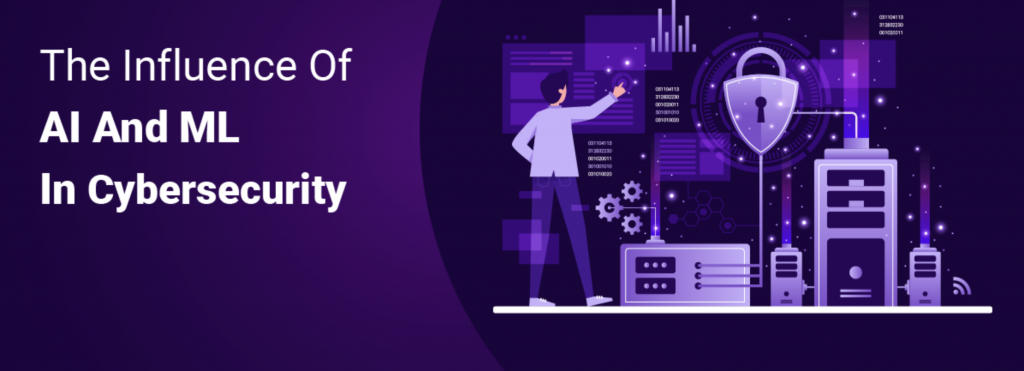Mastering Cyber Defense: The Impact Of AI & ML On Security Strategies
The cybersecurity landscape is a relentless battlefield. Attackers are constantly innovating, churning out new threats at an alarming rate. Traditional security solutions are struggling to keep pace. But fear not, weary defenders! Artificial Intelligence (AI) and Machine Learning (ML) are emerging as powerful weapons in our arsenal, offering the potential to revolutionize cybersecurity.

The Numbers Don’t Lie: Why AI/ML Matters
- Security Incidents on the Rise: According to the IBM Security X-Force Threat Intelligence Index 2023 https://www.ibm.com/reports/threat-intelligence, the average organization experienced 270 data breaches in 2022, a staggering 13% increase from the previous year.
- Alert Fatigue is Real: Security analysts are bombarded with a constant stream of alerts, often leading to “alert fatigue” and missed critical threats. A study by the Ponemon Institute found that it takes an average of 280 days to identify and contain a security breach https://www.ponemon.org/.
AI/ML to the Rescue: Current Applications
AI and ML are already making a significant impact on cybersecurity:
- Reverse Engineering Malware with Speed: AI can disassemble and analyze malicious code at lightning speed, uncovering its functionalities and vulnerabilities much faster than traditional methods. This allows defenders to understand attacker tactics and develop effective countermeasures before widespread damage occurs.
- Prioritizing the Vulnerability Avalanche: Legacy vulnerability scanners often generate overwhelming lists of potential weaknesses. AI can prioritize these vulnerabilities based on exploitability and potential impact, allowing security teams to focus their efforts on the most critical issues first. A study by McAfee found that organizations can reduce the time to patch critical vulnerabilities by up to 70% using AI https://www.mcafee.com/blogs/internet-security/the-what-why-and-how-of-ai-and-threat-detection/.
- Security SIEMs Get Smarter: Security Information and Event Management (SIEM) systems ingest vast amounts of security data. AI can analyze this data in real-time, correlating events and identifying potential threats with an accuracy far exceeding human capabilities. This significantly improves threat detection accuracy and reduces the time attackers have to operate undetected within a network.
The Future of AI/ML in Cybersecurity: A Glimpse Beyond
As AI and ML technologies mature, we can expect even more transformative applications:
- Context is King: AI can be trained to understand the context of security events, considering user behaviour, network activity, and system configurations. This will enable highly sophisticated threat detection and prevention capabilities, automatically adapting to new situations and attacker tactics.
- Automating Security Tasks: Imagine a future where AI automates not just vulnerability scanning, but also incident response, patch management, and even threat hunting. This would free up security teams to focus on more strategic initiatives and significantly improve overall security posture.
Challenges and Considerations: No Silver Bullet
While AI/ML offers immense potential, it’s important to acknowledge the challenges:
- Explainability and Transparency: AI models can sometimes make decisions that are difficult for humans to understand. This lack of explainability can make it challenging to trust and audit AI-powered security systems. Security teams need to ensure they understand how AI systems reach conclusions and that these conclusions are aligned with overall security goals.
- Data Quality and Bias: The effectiveness of AI/ML models heavily relies on the quality of the data they are trained on. Biased data can lead to biased models that might miss certain threats or flag legitimate activity as malicious. Security teams need to ensure their training data is diverse and unbiased to avoid perpetuating security blind spots.
The Takeaway: Embrace the Future
Security practitioners and engineers are at the forefront of adopting and shaping AI/ML solutions. By understanding the current applications, future potential, and the associated challenges, you can ensure that AI becomes a powerful ally in your cybersecurity arsenal. Embrace AI/ML, and together we can build a more secure future!
#AI #MachineLearning #Cybersecurity #ThreatDetection #SecurityAutomation
P.S. Check out these resources to learn more:
- A Multilayer Framework for Good Cybersecurity Practices for AI: https://www.enisa.europa.eu/publications/multilayer-framework-for-good-cybersecurity-practices-for-ai by ENISA (European Union Agency for Cybersecurity)
NIST Artificial Intelligence Risk Management Framework (AI RMF 1.0): https://www.nist.gov/itl/ai-risk-management-framework) by National Institute of Standards and Technology (NIST)

